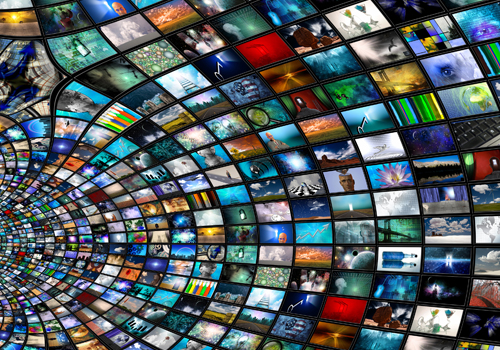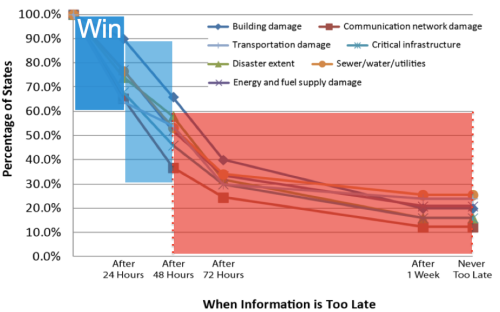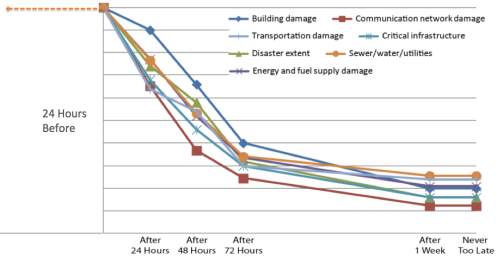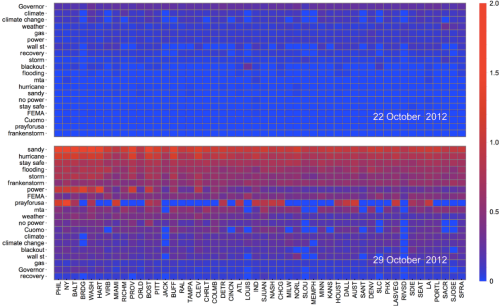In 2010, I had the opportunity to participate in the very first Disaster Response Working Group meeting held at Facebook. The digital humanitarian response to the tragic Haiti earthquake months earlier was the main point of discussion. Digital Humanitarians at the time had crowdsourced social media monitoring and satellite imagery analysis to create a unique set of crisis maps used by a range of responders. Humanitarian organizations to this day point to the Haiti response as a pivotal milestone in the history of crisis mapping. Today marks an equally important milestone thanks to three humanitarian groups and Facebook.
Facebook just announced a new partnership with UNICEF, the International Federation of the Red Cross (IFRC), American Red Cross (ARC) and the World Food Program (WFP) to begin sharing actionable, real-time data that will fill critical data gaps that exist in the first hours of a sudden onset disaster. UNICEF, IFRC, ARC and WFP deserve considerable praise in partnering on such an innovative effort. As the IFRC’s World Disaster Report noted in 2005, having access to information during disasters is equally important as having access to food, water and medicine. But unlike these other commodities, information has a far shorter shelf life. In other words, the value of information depreciates very quickly; information rots fast.
Disaster responders need information that is both reliable and timely. Both are typically scarce after disasters. Saving time can make all the difference. The faster responders get reliable information, the faster they can prioritize and mobilize relief efforts based on established needs. Information takes time to analyze, however, especially unstructured information. Digital Humanitarians encountered this Big Data challenge first hand during the Haiti Earthquake response, and after most disasters since then. Still, online data has the potential to fill crucial data gaps. This is especially true if this data is made available in a structured and responsible way by a company like Facebook; a platform that reaches nearly 2 billion people around the world. And by listening to what aid organizations need, Facebook is providing this information in a format that is actually usable and useful.
Listening to Humanitarian Needs
In early 2016, I began consulting with Facebook on their disaster mapping initiative. One of our first orders of business was to reach out to subject matter experts around the world. It is all too easy for companies in Silicon Valley to speculate about solutions that could be useful to humanitarian organizations. The problem with that approach is that said companies almost never consult seasoned humanitarian professionals in the process. Facebook took a different approach. They spent well over half-a-year meeting with and listening to humanitarian professionals across a number of different aid organizations. Then, they co-developed the solution together with experts from UNCIEF, IFRC, ARC, WFP and myself. This process insured that they built solutions that are actually needed by the intended end users. Other Silicon Valley companies really ought to take the same approach when seeking to support social good efforts in a meaningful manner.
UNICEF, IFRC, ARC and WFP bring extensive expertise and global reach to this new partnership with Facebook. They have both the capacity and strong interest to fully leverage the new disaster maps being made available. And each of these humanitarian organizations have spent a considerable amount of time and energy collaborating with Facebook to iterate on the disaster maps. This type of commitment, partnership and leadership from the humanitarian sector is vital and indeed absolutely necessary to innovate and scale innovation.
One of the areas in which Facebook exercised great care was in applying protection standards. This was another area in which I provided guidance, along with colleagues at the International Committee of the Red Cross (ICRC). We worked closely with Facebook to ensure that their efforts followed established protection protocols in the humanitarian sector. In September 2016, for example, three Facebookers and I participated in a full-day protection workshop organized the ICRC. Facebook presented on the new mapping project – still in its very early stages – and actively solicited feedback from the ICRC and a dozen other humanitarian organizations that participated in the workshop. Facebook noted upfront that they didn’t have all the answers and welcomed as much input as humanitarian professionals could give. As it turns out, they were already well on their way to being fully in line with the ICRC’s own protection protocols.
Facebook also worked with its own internal privacy, security and legal teams to ensure that the datasets it produced were privacy-preserving and consistent with legal standards around the world. This process took a long time. Some insight from the “inside”: I began joking that this process makes the UN look fast. But the fact that Facebook was so careful and meticulous when it came to data privacy was certainly reassuring. To be sure, Facebook developed a rigorous review process to ensure that our applied research was carried out responsibly and ethically. This demonstrates that using data for high-impact, social good projects need not be at odds with privacy—we can achieve both. By using data aggregating and spatial smoothing, for example, we can reduce noise in the data and identify important trends while following its data privacy standards.
Another important area of collaboration very early on focused specifically on data bias. The team at Facebook was careful to emphasize that their data was not a silver bullet – it is representative of people who use Facebook on mobile with Location Services enabled. To this end, one of the areas I worked on closely with Facebook was validation. For example, in an early iteration of the maps, I analyzed mainstream media news reports on the Fort McMurray Fires in Canada and matched them with specific patterns we had observed on Facebook’s maps. The results suggested that Facebook’s geospatial data was providing reliable insights about evacuation and safety on the ground albeit in real time compared to the media reports which were published many hours later.
Facebook Safety Check
Within 24 hours of activating Safety Check, we see that there are far fewer people than usual in the town of Fort McMurray. Areas that are color-coded red reflect much lower numbers of Facebook users there compared to the same time the week before. This makes sense since these locations are affected by the wildfires and have thus been evacuated.

We can use Facebook’s Safety Check data to create live disaster maps that quickly highlight where groups of users are checking in safe, and also where they are not checking in safe. This could provide a number of important proxies such as disaster damage, for example.
Facebook Location Maps
We see that before the crisis began (left plot) people were located in the town in expected numbers, but quickly vacated over the next 24 hour period (map turning red). Even within just an hour and half into the crisis we can tell that users are evacuating the town (the red color indicating low values of people present compared to baseline data). This signal becomes even more clear and consistent as the crisis progresses.

Population here refers to the population of Facebook users. These aggregated maps can provide a proxy for population density and movement before, during and after humanitarian disasters.
In the above video, the blue line that stretches diagonally across the map is Highway 63, which was the primary evacuation route for many in McMurray. The video shows where the general population of Facebook users is moving over time at half-hour intervals. Notice that the blue line becomes even denser between 1 and 3 A.M. local time. Reports from the mainstream media published that afternoon revealed that many drivers ended up having to “camp” along the highway overnight.
Take the map below of the Kaikoura Earthquake in New Zealand as another example. The disaster maps for the earthquake show the location and movement of people in Kaikoura following the disaster. One day after the earthquake, we notice that the population begins to evacuate the city. Using news articles, we can cross validate that residents of Kaikoura were evacuated to Christchurch, 200 kilometers away. Several days later, we notice from the Facebook maps that individuals are starting to return to Kaikoura, presumably to repair and rebuild their community.

It’s still early days, and Facebook plans to work closely alongside their partners to better understand and report biases in the data. This is another reason why Facebook’s partnership with UNICEF, IFRC, ARC and WFP is so critical. These groups have the capacity to compare the disaster maps with other datasets, validate the maps with field surveys, and support Facebook in understanding how to address issues of representativeness. One approach they are exploring is to compare the disaster maps to the population density datasets that Facebook has already open-sourced. By making this comparison, we can clearly communicate any areas that are likely to be inadequately covered by the disaster data. They are also working with Facebook’s Connectivity Lab to develop bias-correcting solutions based on maps of cell phone connectivity. For more on social media, bias and crisis mapping, see Chapter 2 of Digital Humanitarians.
Moving Forward
Our humanitarian partners are keen to use Facebook’s new solution in their relief efforts. Thanks to Facebook’s data, we can create a series of unique maps that in turn provide unique insights and do so in real-time. These maps can be made available right away and updated at 15 minute intervals if need be. Let me repeat that: every 15 minutes. This is the first time in history that humanitarian organizations will have access to such high frequency, privacy-preserving structured data powered by some 1.86 billion online users.
There is no doubt that responders would’ve had far more situational awareness and far more quickly had these crisis maps existed in the wake of Haiti’s tragic earthquake in 2010. Since the maps aggregate Facebook data to administrative boundaries, humanitarian partners can also integrate this unique dataset into their own systems. During the first Facebook Disaster Working Group meeting back in 2010, we asked ourselves how Facebook might leverage it’s own data to create unique maps to help aid organizations reduce suffering and loss of life. Today, not only do we have an answer to this question, we also have the beginnings of an operational solution that humanitarians can use directly.
Facebook’s new disaster mapping solution is not a silver bullet, however; all my colleagues at Facebook recognize this full well, as do our humanitarian partners. These maps simply serve as new, unique and independent sources of real-time data and insights for humanitarian organizations. The number of Facebook users has essentially doubled since the Haiti Earthquake, nearing 2 billion users today. The more people around the planet connect and share on Facebook, the more insights responders gain on how best to carry out relief efforts during major disasters. This information is a public good that has the potential to save lives, and it’s crucial that insights derived from the data be made available to those who can put it to use. I sincerely hope that other Silicon Valley companies take note of these efforts and following in Facebook’s footsteps.

As a next step, Facebook is looking to both international and local humanitarian partners to help improve, validate and measure the impact of these new disaster maps. As the Facebook team works to validate the maps with the humanitarian community, they also hope to make the maps available to aid organizations though a dedicated API and Visualization tool. Interested organizations will be asked to follow a simple application process to gain access to the disaster maps.
Facebook disaster maps are really unique and we’ve only begun to scratch the surface vis-à-vis the different humanitarian efforts these maps can inform. For example, my team and I at WeRobotics were recently in the Dominican Republic (DR) where we ran a full-fledged disaster response exercise with the country’s Emergency Operations Center (EOC) and the World Food Program (WFP). The purpose of the simulation—which focused on searching for survivors and assessing disaster damage—was to develop and test coordination mechanisms to facilitate the rapid deployment of small drones or Unmanned Aerial Vehicles (UAVs). As the drone pilots began to program their drones to carry out the aerial surveys, I turned to my WFP colleague Gabriela and said:
“What if, during the next disaster, we used Facebook’s Safety Check Map to prioritize which areas the drones should search? What if we used Facebook’s Population Map to prioritize aerial surveys of areas that are being abandoned, possibly to due to collapsed buildings or other types of infrastructure damage? Since the Facebook maps are available in near real-time, we could program the drone flights within minutes of a disaster. What do you think?”
Gaby looked back at the drones and said:
“Wow. This would change everything.”






































